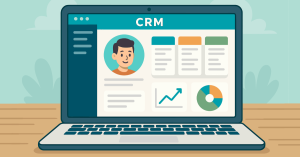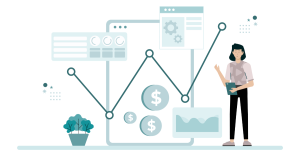You’ve just launched your inbound campaign and high-quality leads are beginning to flow into your CRM system. Your work here is done, right? Of course not! This is only the beginning. Once your inbound campaigns are launched, you have to make sure your new leads remain high-quality by developing them into sales-ready opportunities.
This is where the art of sales nurturing comes into play—depending on your line of business, the sales cycle can last months or years. It’s not always easy to nurture these leads in an efficient, timely manner—your sales team can forget about a lead six months from now, or turnover can leave a lead falling through the cracks.
That’s where your emfluence Marketing Platform can really help. Using automated workflows to send your messages ensures that your leads are sent the most appropriate content for them, at exactly the right time, no matter where they are in the sales journey.
Let’s define exactly why the nurturing phase of the campaign can be so challenging, then examine some best practices for conducting a successful automated email campaign of your own:
The Ultimate Strategy Guide to Microsoft Dynamics and Marketing Automation
Learn how to integrate dynamics with your email, social, & more
The Challenge of Effective Sales Nurturing
Nurturing sales prospects with a marketing automation strategy is proven to increase the conversion rate of your leads into opportunities. Without a marketing automation platform, the nurturing phase is labor intensive, and the content that informs a potential buyer as they journey along the sales funnel might not align to the prospects’ needs at that time. The occasional one-off email to contacts in your CRM won’t be nearly as effective as a well thought-out and targeted message that’s automated to send at the exact right moment. For example, it won’t do much good to present an in-depth description of your solution’s great features if your audience isn’t yet aware of the problems those features solve. That’s why an automated nurturing program that includes a systematic approach to engaging leads through your content and website site, correctly identifying where that lead is in the sales cycle, gives you the best chance to convert them into paying customers.
As you get started with nurturing, here are some of the more important elements to get right for your automated nurturing efforts to succeed:
Segment, Segment, Segment
There will rarely be a time when it makes sense to target every contact in your database with the same message. Every person is different, and so are their needs. Think about how you can segment based on a variety of criteria, like demographic or firmographic data. Once formulated, you can use these lists to target specific customers that are at similar places in the customer journey. With an integrated CRM and marketing automation platform, you’ll have a variety of segmentation tools at your disposal, including subscription centers that allow your contacts to manually opt in or out of newsletter, sales data from a CRM record, and access to zip codes, interests, and more.
You should also have the capability to track lead responses to your content. This allows you to further divide contacts into appropriate contact lists, like by niche or specific pain point. With an automated process, the next round of emails can then be drip-fed to the appropriate Leads, delivering the most relevant information at exactly the right time.
Think Beyond Email
Your prospects expect to interact with you in a myriad of ways. You shouldn’t rely on email marketing campaigns alone to generate and nourish your leads. Think about other ways you can engage your prospects in the nurture process: Are events and webinars a way that your organization generates excitement for potential buyers? Do you have informational materials you can offer for download? Make sure these are included in your plans. Set automated emails with invites based on the criteria that has indicated interest in this approach in the past. Or, if a certain group of prospects might respond better to a phone call, make sure an alert is set to trigger that action as well.
Automate Lifecycle Messages
The kind of email you send a new prospect should be very different from the kind of email you send to a long-term prospect. Think about lifecycle as you put together your nurture campaigns: what’s the first touch point you want to have with a new lead? What does someone who has been engaged and fell off the map need to hear from you? What message makes a new customer feel like they’ve made the right decision?
These labels can be set to activate with an automated trigger, such as when a customer takes a trackable action, like downloading a gated asset from your landing page. You can usually automate the same identifiers you have always used to mark a qualified lead, saving a lot of time and ensuring that opportunities to reach out to your prospective buyers are never missed.
Identify and Segment your Sales-Ready Leads
You can and should automate your nurturing tactics based on lead scores. Set your triggers so that contacts at the top-of-the-funnel receive the right content (often blog posts or infographics). Save gated-assets, like solution briefs or events like webinars, for middle-of-the-funnel prospects. Those contacts who are most likely to buy should be targeted for demonstrations or sales visits. Your marketing automation platform, integrated into your CRM, will help you get the right content to the right segment at just the right time. And don’t forget about the power of multiple contact scoring models, which will help you create nurture strategies for long-term prospects, short-term prospects, customers, resellers, and more.
Want help understanding how your marketing automation platform best connects to your CRM? Reach out to us at expert@emfluence.com for a demo.


